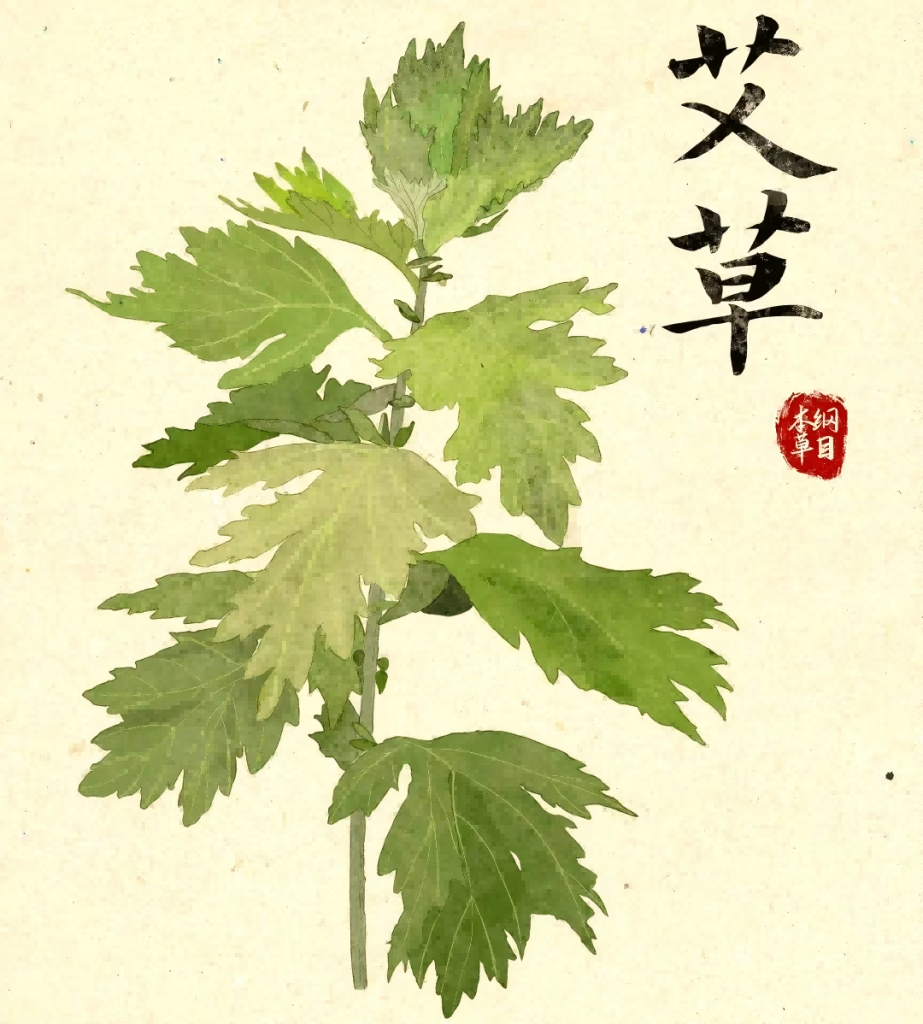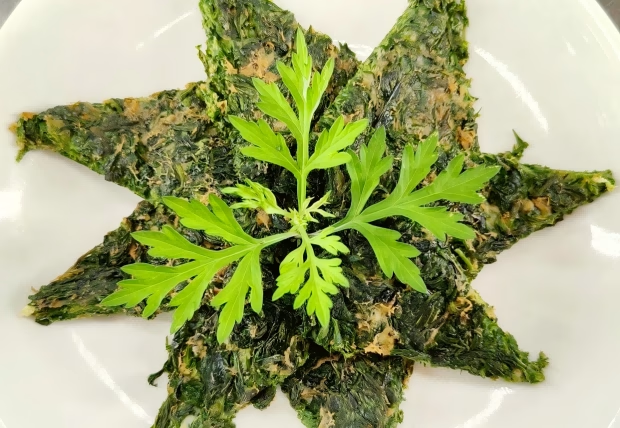What are the health benefits of mugwort? What other sweet and savory dishes and everyday uses can it have? You can use mugwort to make a simple mosquito repellent bag.
Chinese Customs Related to Mugwort
During the Dragon Boat Festival in China, every household hangs mugwort and calamus to pray for protection and ward off evil spirits. Mugwort can be used medicinally and in cooking. The classic “Cao Zai Guo” (grass cake) made with mugwort is a daily snack and a must-have for ancestor worship during the Qingming Festival.

Mugwort can be used as both a herb and a food.
Mugwort is a perennial herb in the Asteraceae family, growing approximately 60 to 120 cm in length. Its leaves are feather-like and radiate. The underside of the leaves is covered with fine, grayish-white hairs, and it has a distinctive aroma.
Medicinal Uses of Mugwort
Mugwort is commonly used in Traditional Chinese Medicine. It has a bitter and warming taste and is used to regulate qi and blood, remove cold and dampness, stop bleeding, and stabilize pregnancy. For example, Traditional Chinese Medicine often uses mugwort, kneaded into moxa, for acupuncture and moxibustion applications.
How to Use Mugwort in cooking?
Due to its delicate aroma, mugwort, when used in moderation, can enhance the flavor of any dish. A typical example is glutinous rice balls. Adding a moderate amount of mugwort juice creates a green-dyed tsao zai kueh or mugwort mochi, creating a delightful and elegant flavor.
Mugwort contains nutrients such as vitamins A, B, and C, calcium, phosphorus, and dietary fiber. By capitalizing on its aroma and coloring properties, it can be used in a variety of cooking variations. (Note: If you have cardiovascular disease, are physically weak, or are unsure whether it is suitable for consumption, it is recommended to consult a traditional Chinese medicine practitioner and avoid using it on your own.)
Cooking Mugwort Recipes: Sweet and Savory Varieties
Using Mugwort in Dishes: Mugwort Omelette, Bean Curd Rolls, etc.
References to aromatic plants like cilantro and celery will inspire you to create culinary ideas. For a mugwort omelet or tofu skin roll, simply blanch a suitable amount of mugwort, drain the moisture, mince it, and mix it into an egg mixture or wrap it in raw tofu skin. Pan-fry it in sesame oil and season it. This mugwort omelet or tofu skin roll offers a unique and refreshing flavor.
Mugwort desserts: mugwort cake, bread, grass cake, etc.
To incorporate mugwort into any pastry, such as dough, cake batter, or glutinous rice balls, finely mince the mugwort or blend it in a blender to create a mugwort juice. Mugwort can be used to add aroma and color to pastries, such as mugwort bread and mugwort cake.
Be especially careful, as mugwort itself has a slightly bitter taste, so it’s recommended to blanch the mugwort leaves in boiling water or add a little salt to the water. Remove the leaves, drain the moisture, and then grind or blend them in water. This will help reduce the bitterness. Adding sugar to pastries can enhance the flavor.
Mugwort is incredibly useful, and its unique fragrance makes it a great use for many things.
There are many more ways to use mugwort in your daily life.
Repelling mosquitoes:
- The scent of mugwort helps repel mosquitoes. Besides simply placing mugwort leaves around your home, if you prefer to plant them, they’re more suitable for outdoor planting due to their large size and adaptability to the surrounding environment.
- Alternatively, you can dry mugwort and burn it outdoors as a natural mosquito coil, using the smoke to release the essential oils, which repels mosquitoes. This is a tradition passed down from the past.
- Crushing the mugwort and burning it in a burning pan is also an option, but be careful with fire.
- Alternatively, soaking mugwort powder in 75% alcohol can create a mugwort cleaner, which is a simple solution for cleaning and disinfecting.
Homemade mugwort bags
The aroma of mugwort can actually have a calming effect on some people.
For crafting enthusiasts, fresh mugwort can be dried in the sun, then crushed into small pieces using a rolling pin. Place the pieces in a breathable cotton or gauze bag and carry them with you or hang them indoors to refresh both the environment and your soul.
Adding herbs like rosemary and mint to the mugwort bag enriches the aroma and repels mosquitoes.
Foot Soak or Shower
When the weather is cold or you’re feeling low, a warm bath or foot soak is ideal. Dried mugwort branches and leaves can be soaked in hot water and used for foot soaks and other purposes.
Mugwort itself has the properties of removing dampness and coldness and promoting blood circulation. A foot soak promotes blood circulation and has a light mugwort fragrance, which can help you relax.
When using mugwort for foot soaks, be careful not to do it immediately after meals. The recommended soaking time is 10 to 15 minutes, not longer than that. Avoid frequent use, such as multiple times a day or even daily.


Leave a Reply